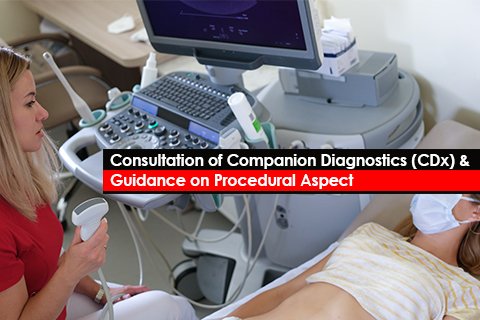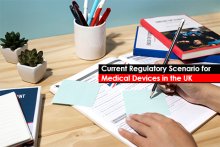Companion Diagnostics (CDx) are In Vitro Diagnostic devices used in conjunction with therapeutic drugs to determine their suitability for the patients. To place the CDx in the European Union, the manufacturer is required to submit technical and other relevant documents to the Notified Body (NB) for technical and conformity assessment. The Notified Body (NB) would issue the conformity certificate after the assessment is concluded.
The conformity assessment and documents to be submitted depend upon the type of device that is being placed on the market -
- Co-developed CDx: A companion diagnostic device is developed alongside the therapeutic drug.
- Follow-on CDx: A companion diagnostic device is developed with the same intended use as the originally developed CDx and with the same targeted biomarker.
The Notified Body (NB) conformity assessment is carried out to verify that all the standard requirements have been met. Section 5.2 of Annex IX of EU IVDR 2017/746 corresponds to the conformity assessment of companion diagnostics, and the manufacturers are required to submit the details on:
- Device description and specification (inclusive of variants and accessories)
- Information supplied along with the device (labels, Instructions for Use (IFU), etc.)
- Design and manufacturing information
- General safety and performance
- Risk analysis and risk management
- Summary of safety and performance
The Notified Body (NB), as a part of conformity assessment, may seek scientific opinion on the medicinal product. The Notified Body (NB) shall consult the European Medicine Agency (EMA) or the competent authorities of the medicinal products as per Directive 2001/83/EC. The Notified Body (NB) may consult EMA if –
- the medicinal product is under the mandatory scope, and the centralized procedure is followed (a single evaluation is conducted, and the product is authorized across the European Union)
- the medicinal product is already authorized or is being reviewed for the same under the centralized procedure under the optional scope
The EMA has released a specific guidance document on the consultation procedure of the companion diagnostics, and the consultation procedure is split into different phases –
- Pre-Submission
- Submission
- Assessment
- Post-consultation
Pre-Submission Phase
The Notified Body (NB) is required to submit the “intent-to-submit” letter to the EMA three (03) months before the submission date of the request for the scientific opinion. A rapporteur will be appointed by the Committee for Medicinal Products for Human Use (CHMP), and in the case of advanced therapies, another rapporteur is appointed by the Committee for Advanced Therapies (CAT) along with the CHMP rapporteur. Any questions concerning the consultation procedure are recommended to be put forth within two (02) months of the planned submission date.
Submission Phase
The Notified Body (NB) is required to submit the application along with other relevant documents to the CHMP/CAT. The application should consist of an application form, cover letter, draft of Instruction For Use (IFU), and draft of the Summary of Safety and Performance (SSP). The consultation assessment by the CHMP/CAT is based upon the suitability of the companion diagnostic and the involved medicinal product/s. The suitability can be considered in terms of the scientific rationale for biomarker selection, clinical benefits and safety to the patients, and clinical and analytical performance of the product. Since the Notified Body (NB) has already reviewed the design dossier document, the consultation involves only the discussion relevant to the suitability of the companion diagnostic to the involved medicinal product/s.
Assessment Phase
Post-initiation of the consultation procedure, the EMA will provide the scientific opinion within sixty (60) days of the same. This time period can be extended in case of any further dues. In case of any concerns or clarification required by the CHMP/CAT, the list of questions is provided to the Notified Bodies (NBs), which will be required to be addressed within the given timeframe. Post assessment, the scientific opinion is developed and issued by the CHMP. In the case of advanced therapies, the CHMP issues the scientific opinion based upon the draft opinion of the CAT. This document is then sent to the Notified Body (NB). Based on this opinion, the Notified Body (NB) will further convey its final decision to the EMA.
Post-consultation Phase
In case any changes are made to the device impacting the performance or the intended use, a follow-up consultation is established. The Notified Body (NB) examines these changes and consults the EMA on the same. In case the Notified Body (NB) considers it as a new conformity assessment, a new initial consultation will be followed.
The consultation is one of the important aspects in the approval of companion diagnostics and subsequent placement of the product in the EU market. It is necessary for the manufacturers of companion diagnostics to have an appropriate understanding of the consultation procedure between the Notified Bodies (NBs) and the competent authorities or the EMA. The manufacturers shall consider the timelines for consultation in the overall project planning and shall also plan the submission documents accordingly.
Are you a companion diagnostics manufacturer? Do you need assistance in aligning with the EU IVDR regulations? Reach out to Freyr – a proven Regulatory expert. Stay informed. Stay compliant.





